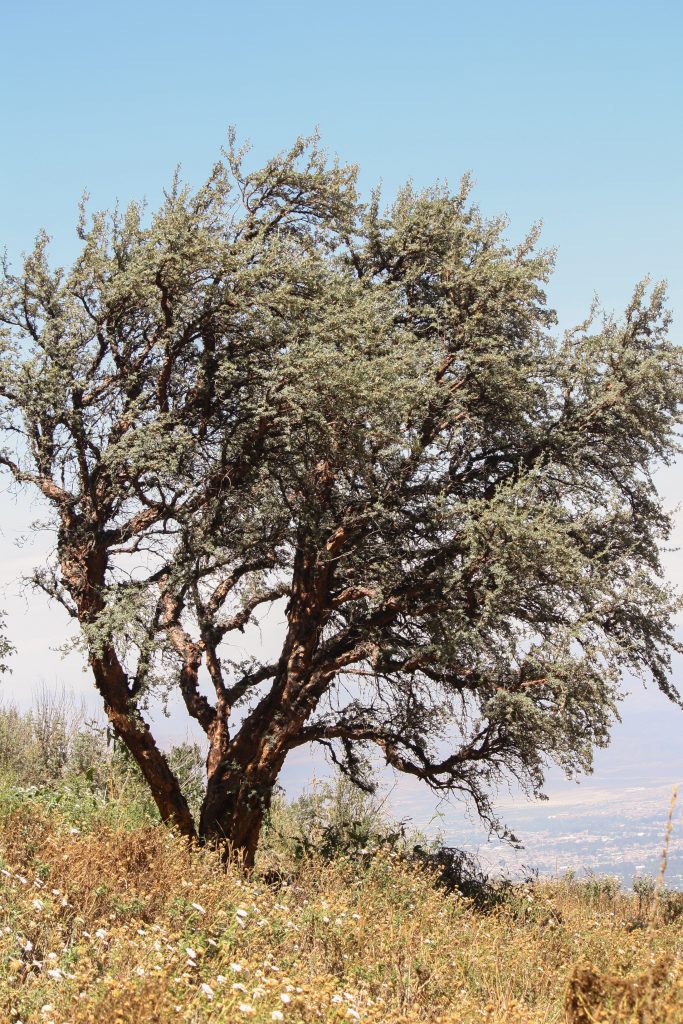Found up to 5200 meters above sea level across the Andes of South America, Polylepis trees can grow higher than any other in the world. True survivors, these trees are able to withstand extreme dry, cold and windy conditions and offer a home to many rare plant and animal species that occur nowhere else in the world. Sadly, Polylepis forests are disappearing all over South America as they are gradually replaced by fields and pastures. Today, most of these forests only remain as small, isolated fragments no larger than a few hectares.
There is an urgent need to know more about and protect Polylepis fragments and the plant and animal species they contain. Unfortunately, many of these fragments are located in remote, inaccessible areas like ravines and ledges. Due to the difficulty of accessing these fragments, most scientists that have attempted to study these forests have focused on plants or, when it comes to animals, to birds. What makes birds so popular as a study group is that they are easier to spot and count than other animal groups, like shy reptiles and mammals, or tiny insects for example.

The Tunari National Park is one of the most important areas for the protection of Polylepis forests and their birds in South America. Like everywhere else, these forests are quickly disappearing and many bird species they are home to are now threatened with extinction. The main aim of my PhD was to study the birds inhabiting the Polylepis forest fragments of the Tunari National Park in Bolivia, in order to learn more about how to protect them. To do that, I wanted to find out whether all bird species occur in all remaining Polylepis forest fragments inside the Park, and if not, why.
There was one big issue to overcome before I could study the birds of Polylepis fragments in the Tunari National Park: locating and mapping these fragments. And finding small forest fragments scattered across a 3000 km² mountainous area is no easy task! I therefore asked local scientists, used satellite images from Google Earth and went on various expeditions in the Tunari National Park to find 20 Polylepis forest fragments. During these visits, I noticed that most fragments are used to collect wood, graze cattle and are often burnt down to make space for agricultural land. In and around some of the fragments, I also observed that locals regularly plant exotic trees, like eucalyptus or pine trees, to replace lost Polylepis trees.

Using our brand new map, myself and several students paid several visits to the 15 largest and most accessible of the fragments and counted all bird species we could find. Across all fragments, we found almost 150 different bird species, some of which, like the Cochabamba Mountain-Finch (Compsospiza garleppi), do not occur outside of Bolivia, and others, like the Giant Conebill (Conirostrum binghami) only inhabit Polylepis forests and are threatened with extinction. In an analysis we carried out with these counts, we found that both topography and habitat quality play an important role in determining how many and which species are found inside the fragments.

In mountain areas, topography, or relief, can influence humidity, warmth and wind conditions, and can therefore influence where plants and animals are able to survive. For example, valleys are usually colder during the day, warmer during the night, less windy and more humid than mountain ridges. In our study, we found that topography also influences in which forest fragments some birds live. We indeed found that low-elevation and more humid forest fragments contain more bird species, while the highest, sunniest and most preserved forest fragments contain the rarest and most threatened species.
Of course, other characteristics related to habitat quality, like the number and size of trees a forest fragment contains, its size, or how much it is affected by human activities for example, can also influence the presence of many species. In the Tunari National Park, we found that birds are strongly affected by the presence of planted pine or eucalyptus trees -whether inside or close to Polylepis fragments. We found fewer birds, and especially threatened and rare species, in fragments where eucalyptus and pine trees are present. Local inhabitants prefer planting these exotic trees rather than Polylepis because they grow much faster, but, since they seem to affect the Polylepis birds, it would be best to plant them away from existing Polylepis forests.

Despite the strong need to protect them, few Polylepis forests are located inside protected areas today. The Tunari National Park offers a great opportunity to protect many rare and endangered Polylepis forest fragments and the species they are home to. Thanks to our work in this remote area, we now better understand how to protect birds in these fragments. Preventing the establishment of exotic tree species inside or in close proximity of these fragments and accounting for topographical characteristics when distributing conservation and restoration efforts would all contribute to protect the rare and endangered birds living in the world’s highest forests.

Original article published as: Fastré, C., Strubbe, D., Balderrama, J. A., Cahill, J. R., Ledegen, H., Orellana, M. T., & Matthysen, E. (2020). Bird species richness in High-Andean forest fragments: habitat quality and topography matter. Belgian Journal of Zoology, 150.
Eager to know more about the Tunari National Park? Don’t miss our post taking you in the heart of the park and its Polylepis forests and our post about how to reconcile ecosystem services and biodiversity conservation in the park:

